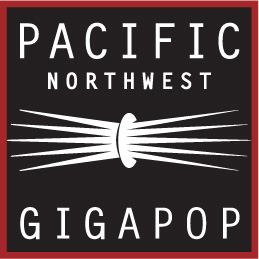New Dynamic Circuit Provisioning Available on Pacific Wave Advanced Network Peering Facility
SALT LAKE CITY — International distributed network peering facility Pacific Wave announced today the enabling of dynamic circuit provisioning using the On-demand Secure Circuits and Advance Reservation System (OSCARS) developed by the US Department of Energy – Energy Sciences Network (ESnet). This new capacity of Pacific Wave will allow researchers (via their regional network provider) to reserve, and have dynamically allocated during the reservation period, a point-to-point network facility across one or more networks.
Pacific Wave is a distributed international peering facility that enables high-performance research and education networks in the Pacific Rim and beyond to connect with one another in any of three cities in the US West Coast (Seattle, Sunnyvale, and Los Angeles). Pacific Wave is a joint project of the Corporation for Education and Network Initiatives in California (CENIC) and the Pacific Northwest Gigapop (PNWGP), and is designed to enhance the efficiency of IP traffic across the west coast of the United States and with partners around the Pacific Rim. With the advanced connectivity provided by Pacific Wave, researchers in data-intensive sciences including astronomy, ocean research, genomics, and high-energy physics can collaborate with one another from anywhere in the world.
“This new offering by Pacific Wave, a major international interconnect point for research and education networks around the Pacific Rim, could vastly expand the number of networks that can interact via such a utility and the kinds of research that can be enabled by it,” said Louis Fox, President and CEO of CENIC.
“The implementation of OSCARS with the new Pacific Wave 100G capacity, when combined with Science DMZs at research institutions, brings a whole new set of collaborative opportunities for data intensive science,” noted Amy Philipson, Executive Director, PNWGP. “More importantly, testing and refining this utility now will enable the research, data sharing, and collaboration envisioned by projects like the Square Kilometre Array which seeks to probe the early universe, test Einstein’s theory of gravity, and search for intelligent life.”
OSCARS open-source software is the most widely adopted inter-domain dynamic circuit services application within the global research and networking community. Its open and evolving framework is inspiring, and inspired by many collaborators that include academic institutions, global networking members as represented at Global Lambda Integrated Facility (GLIF) and standards body, Open Grid Forum (OGF).
About Pacific Northwest Gigapop
The Pacific Northwest Gigapop is a nonprofit corporation serving research and education organizations throughout the Pacific Rim. They provide cost-effective, robust, reliable, high-bandwidth, and high-capacity networking to support the missions of these organizations and the needs of researchers, faculty, students, and staff. PNWGP designs, implements, and manages a multi-state high-bandwidth and high-capacity network specifically designed to meet unique requirements of research and education communities. For more information, please visit http://www.pnw-gigapop.net/.
About CENIC
California’s education and research communities leverage their networking resources under CENIC, the Corporation for Education Network Initiatives in California, in order to obtain cost-effective, high-bandwidth networking to support their missions and answer the needs of their faculty, staff, and students. CENIC designs, implements, and operates CalREN, the California Research and Education Network, a high-bandwidth, high-capacity Internet network specially designed to meet the unique requirements of these communities, and to which the vast majority of the state’s K-20 educational institutions are connected. In order to facilitate collaboration in education and research, CENIC also provides connectivity to non-California institutions and industry research organizations with which CENIC’s Associate researchers and educators are engaged. For more information, please visit http://www.cenic.org/.
About ESnet
ESnet provides the high-bandwidth, reliable connections that link scientists at national laboratories, universities and other research institutions, enabling them to collaborate on some of the world’s most important scientific challenges including energy, climate science, and the origins of the universe. Funded by the DOE Office of Science, and managed and operated by the ESnet team at Lawrence Berkeley National Laboratory, ESnet provides scientists with access to unique DOE research facilities and computing resources. For more information, please visit http://www.es.net/.
